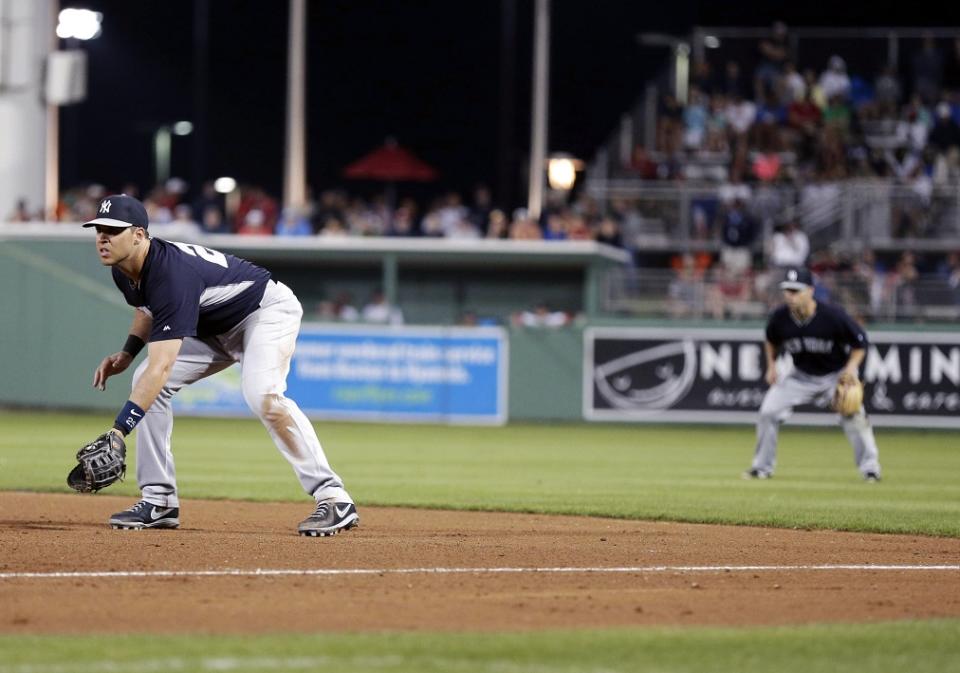Banning defensive shifts would be lazy solution to non-existent problem for MLB
It’s that time of year again. That time when Major League Baseball says it’s prepared to change the way teams are allowed to play defense. Specifically, the league is once again hinting at placing limitations on defensive shifts.
With advanced analytics becoming a bigger part of the game every year, the amount of defensive shifts we see is growing as well. The data tells teams where batters tend to hit the ball. If a batter floods a specific zone with hits, teams counteract it by stacking defenders in that zone. The Athletic’s Jayson Stark reported Wednesday that MLB commissioner Rob Manfred is receiving “strong backing” from the league’s competition committee to try limiting the use of shifts during MLB games. That would likely be the first step toward getting shifts banned outright.
Perhaps this year they’re really serious about it. The report adds that rules aimed at limiting defensive shifts could be put in place before opening day. Or maybe it’s just MLB blowing more smoke to pacify those purists who remain against the idea of a third baseman playing in short right field. For now, we’ll assume it’s the latter. But since the commissioner is openly talking about it, we at least have to assume it’s still a primary discussion in league circles.
To that we say, why are they still wasting their time?
Shifting is part of the game’s evolution. An evolution that should be embraced, not lazily discarded in order to preserve what baseball used to be or is supposed to be. To put it another way, why attempt to fix something that isn’t broken. Defensive shifts aren’t even a small part of MLB’s problems in 2018. Let us explain why.
Evolution of defensive shifts
The usage of shifts has gone from a rarity to begin the decade, to almost routine in 2018.
In 2010, Fangraph’s data on the frequency of defensive shifting shows that the Tampa Bay Rays under manager Joe Maddon employed the shift against a league-leading 261 batters. In 2018, Maddon’s Cubs actually employed the lowest number of shifts to opposing batters with 631. But that low number is still nearly 150 percent higher than the league high just eight years ago.
In fact, only five teams, the Cubs, Angels, Padres, Rangers and Cardinals, shifted for less than 1,000 batters in 2018. The Chicago White Sox set the pace, shifting for 2,150 batters. Overall, teams shifted 17 percent of the time during the past regular season, which is nearly one in every six batters.
It has undeniably become a big part of the strategy across MLB. But has it really impacted the game in a negative way? That’s what MLB should really be focusing on. And if they were, we’re guessing they wouldn’t spend so much time discussing it.

Success rate
The success rate varies, and like all aspects of baseball relies on a degree of luck. Fangraphs has a thorough breakdown that focuses on the types of shifts being used, and the accompanying success rates. The five teams that shifted most frequently (infield and outfield) in 2018 did so an average of 11.9 times per game, with opposing batters averaging 3.3 hits against per game. That’s a .277 batting average. The five teams that shifted the least averaged five shifts per game. Opposing batters averaged 1.5 hits, or a .300 average.
Does that mean shifting more is better? Does that tell us that shifting is even having a notable impact? Not necessarily is the correct answer to both, yet there’s a crowd that’s convinced it’s unfairly dragging down offense in MLB. Just ask super-agent Scott Boras.
There are some variables those numbers don’t account for. It doesn’t tell us the number of times a shifted defender saved a hit, or how often a hit went through his vacated position. But the overriding numbers tell the real story. Shifting does more to get people talking than it does to drain offense from the game.
What would limiting or banning shifts accomplish?
In short, limiting or banning shifts would do more to complicate baseball than fix it. The league would essentially have to assign defenders to specific zones. How would they even determine those zones? Would we have replays to determine if a defender’s toe went outside his territory? Is that the solution?
It shouldn’t be, because defensive shifts aren’t a problem. How about we just let the game evolve and put it on the players to adjust and evolve with it, rather than awkwardly changing rules to eliminate valid strategies. We’re all in favor of more action and crisper play, but there’s no evidence that banning the shift would give us either.
We can say this with confidence though. As long as strikeouts continue rising, the action time will continue decreasing and shifts will matter even less.
More from Yahoo Sports:
• Packers assistant coach fired after tweet
• Team owner pays nearly $100K in Walmart layaway charges
• Ex-NFL star going to prison for attempted murder
• 49ers’ long snapper suspended for second PED violation

